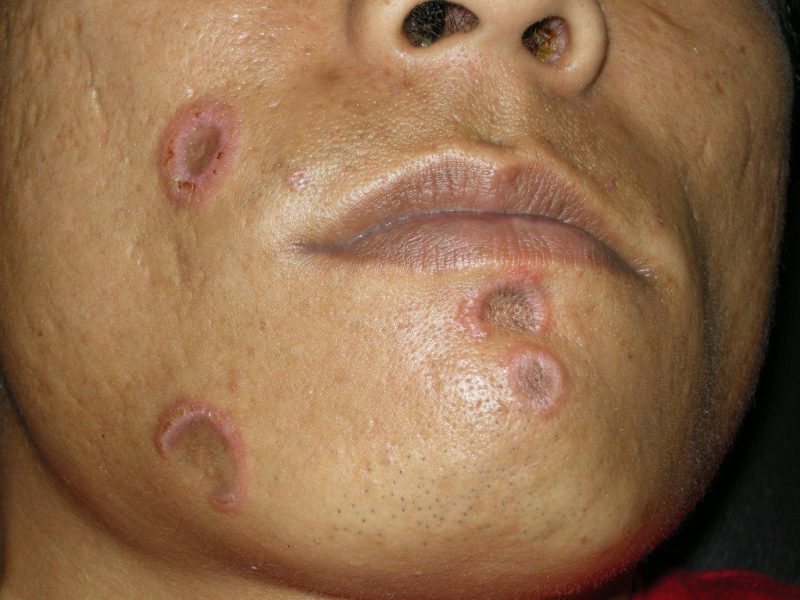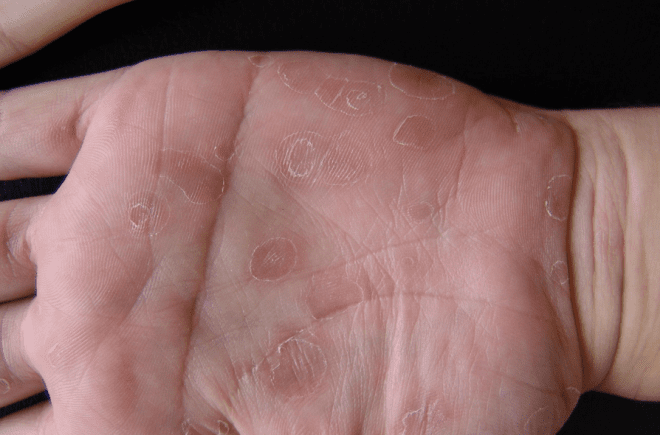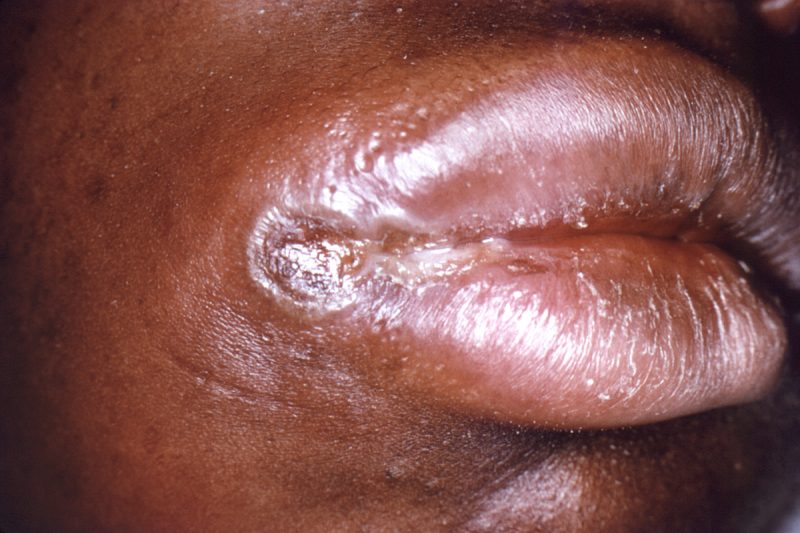Among the most unpleasant sexually transmitted diseases include syphilis. The causative agent of infection is pale treponema. The disease is characterized by slow development and a large number of symptoms. To date, the spread of the disease provides for criminal liability. Today we will tell you how syphilis manifests itself in the first stages and what needs to be done if infection has occurred.
Material Content:
What is syphilis and how does it manifest
Syphilis is called a severe venereal disease, during which internal and external organs can be affected. Almost always, the disease is transmitted through sexual intercourse, through the rectum, vagina or mouth. The causative agent penetrates through the smallest defects of the mucous membranes and affects the body. However, several cases were noted when syphilis was transmitted during household contacts or through saliva during a kiss.
Symptoms of the disease can be very diverse, it directly depends on the period of development of the disease. Not so long ago, this disease was considered incurable, but today it is successfully treated with a special course.
At the first stages, syphilis manifests itself in the form of a solid chancre on the female or male genital organs. After some time, lymph nodes may increase. An ulcer is able to independently heal after 3-4 weeks, however, this feature cannot be attributed to recovery.
The incubation period of the disease
After pale treponema enters the body, the beginning of the incubation period can be counted.The consequence of its completion will be the manifestation of the first alarming signs. The duration of the incubation period may vary in different patients.
On average, it is generally accepted that this is 2-3 weeks, although there have been cases when the disease manifested itself a week after infection or only after a whole month.
 Being in the body, the pathogen multiplies and spreads all the time. In this case, the transport function is performed by blood and lymph.
Being in the body, the pathogen multiplies and spreads all the time. In this case, the transport function is performed by blood and lymph.
Some factors may affect the shorter or longer incubation period:
- Antibiotic therapy. In this case, the medications will suppress the first signs of the disease, and the duration of the latent period will increase. This picture can be observed during treatment with acute respiratory viral infections. However, after the end of the medication, syphilis will manifest itself already more vivid symptoms.
- With secondary infection, the incubation period may be reduced significantly.
No matter how long the latent period lasts, a person is already a carrier of a sexually transmitted disease. After the first signs appear and the correct diagnosis is established, it is imperative to notify all those with whom sexual contact was at that time.
Do not forget that the pathogen can be detected even at the stage of the incubation period. Timely seeking medical help will make it possible to begin earlier treatment, which, in turn, will avoid serious complications.
Symptoms in men, women at different stages
Syphilis is characterized by both internal and external symptoms. Among the most common include:
- The appearance of chancre - it is a smooth ulcer, usually without any pain. It reaches 1 centimeter in diameter and has a bluish-red hue.
- Swollen, reddened tonsils, which make it difficult to swallow.
- Lymph nodes, increasing in size.
- Panaritium, in which the nail bed becomes inflamed, the healing process can last several weeks.
- Pain in the head, muscles and joints, general malaise.
- Inductive edema.
- Fever.
- A decrease in hemoglobin, but an increase in the number of white blood cells in the blood.
 In women, syphilis also manifests itself in the form of chancre, the formation of which is observed on the cervix or on the labia. A girl can note the presence of unpleasant discharge. On the genitals, a feeling of itching and burning remains. Externally, the discharge may resemble purulent formations and have a pungent smell.
In women, syphilis also manifests itself in the form of chancre, the formation of which is observed on the cervix or on the labia. A girl can note the presence of unpleasant discharge. On the genitals, a feeling of itching and burning remains. Externally, the discharge may resemble purulent formations and have a pungent smell.
Signs of syphilis in men are practically no different from women. Chancre is formed on the penis, closer to the head. In rare cases, it can also form on the rectum, anus, pubis. The chancre is covered with a white coating on top, sometimes its size reaches a large coin.
A few weeks later, after the incubation period and the moment the chancre formed, a rash begins to appear.
It can be of several types:
- Alopecia is a rash on the head, under the scalp. These rashes reach a diameter of up to 2 mm, hairs begin to fall on them.
- Roseous spots. They are round or oval in diameter, up to 1.5 cm in diameter. They can appear on all frequent bodies, do not rise much above the skin.
- Erythematous tonsillitis - a rash appears on the mucous membranes of the oral cavity.
- Papular rashes. They are round in shape, light pink in color, size up to 1 cm, can peel off. Occur on the palms, feet, or genitals.
- Leukoderma - spots of a white hue, occur in the neck, under the armpits, on the chest and arms.
- Condylomas - papules join together and become covered with ulcers.
Diagnostic Methods
To establish an accurate diagnosis, a complete examination of the patient is necessary.
The scheme consists of the following items:
- Consultation and survey by specialists.Doctors need to know when the first signs of a rash and ulcers were discovered, what complaints the patient has, when was the last sexual intercourse without barrier contraception.
- Examination of the patient. The specialist should study the nature of the rashes.
- Diagnosis of the disease in the laboratory - you may need to do an MRI, X-ray, ultrasound scan, CT scan.
Also referred to laboratory diagnostics:
- analysis for syphilis;
- polymerase chain reaction;
- serological reactions;
- Wasserman reaction.
Syphilis treatment
In order to start treatment of the disease in a timely manner, it is important not to miss the first signs of syphilis. Never self-medicate., It’s also not advised to start taking any drugs before laboratory diagnostics are performed, otherwise there is the possibility of erased symptoms and to get not quite accurate test results.
At the initial stage, outpatient treatment is allowed, but the patient should regularly visit a doctor so that he can monitor his general condition. The treatment of primary syphilis may take about 3 months, respectively, all subsequent stages will require more time. Until the patient recovers completely, he is forbidden to have any sexual acts.
Syphilis therapy consists of several stages:
- Taking antibiotics. As a rule, the penicillin group is used. Drugs can be administered up to 8 times per day.
- The intake of vitamins.
- Immunostimulants.
- Biogenic stimulants.
- Drugs that contain iodine.
- Physiotherapy.
Perhaps the introduction of additional treatment of internal organs, rash or nervous system.
Consequences and Complications
If you do not deal with the treatment of syphilis, then over time the disease will spread throughout the body. Each time, it will affect more and more large areas of healthy organs and tissues. There are situations when the patient feels some relief, but this should be more alarming than encouraging, as over time the condition can dramatically worsen.
All complications and consequences depend on the stage of development of the disease:
- Primary syphilis, balanitis
phimosis
necrosis of tissue sites in the place where the chancre arose,
paraphimosis. - With secondary syphilis, the following are affected:
bone tissue;
nervous system;
organs of internal systems. - Tertiary syphilis:
treponema begins to have a negative effect on the tissues of the face and neck;
organs of the internal systems and the brain are affected;
syphilis can affect bones, which leads to fractures;
as a result of rupture of blood vessels, bleeding can occur.
If you have any slight suspicion of infection, you should immediately seek help from a specialist. In no case do not self-medicate, as it can only aggravate the situation.













